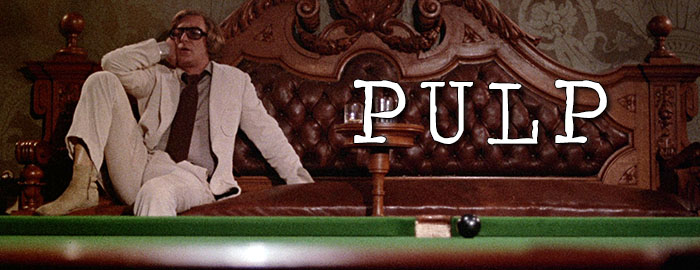
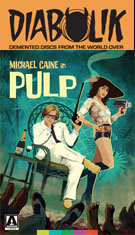

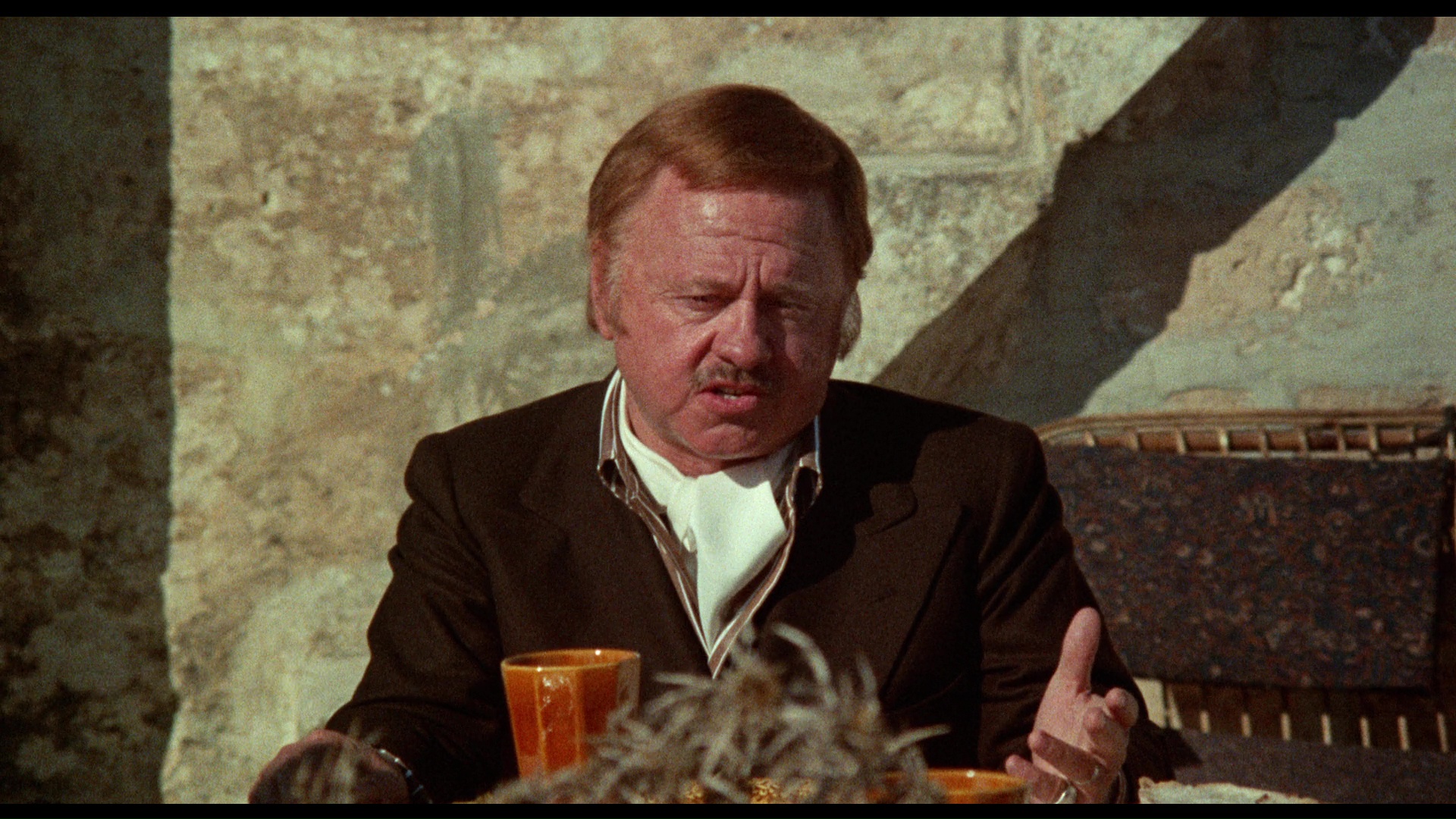 the
the 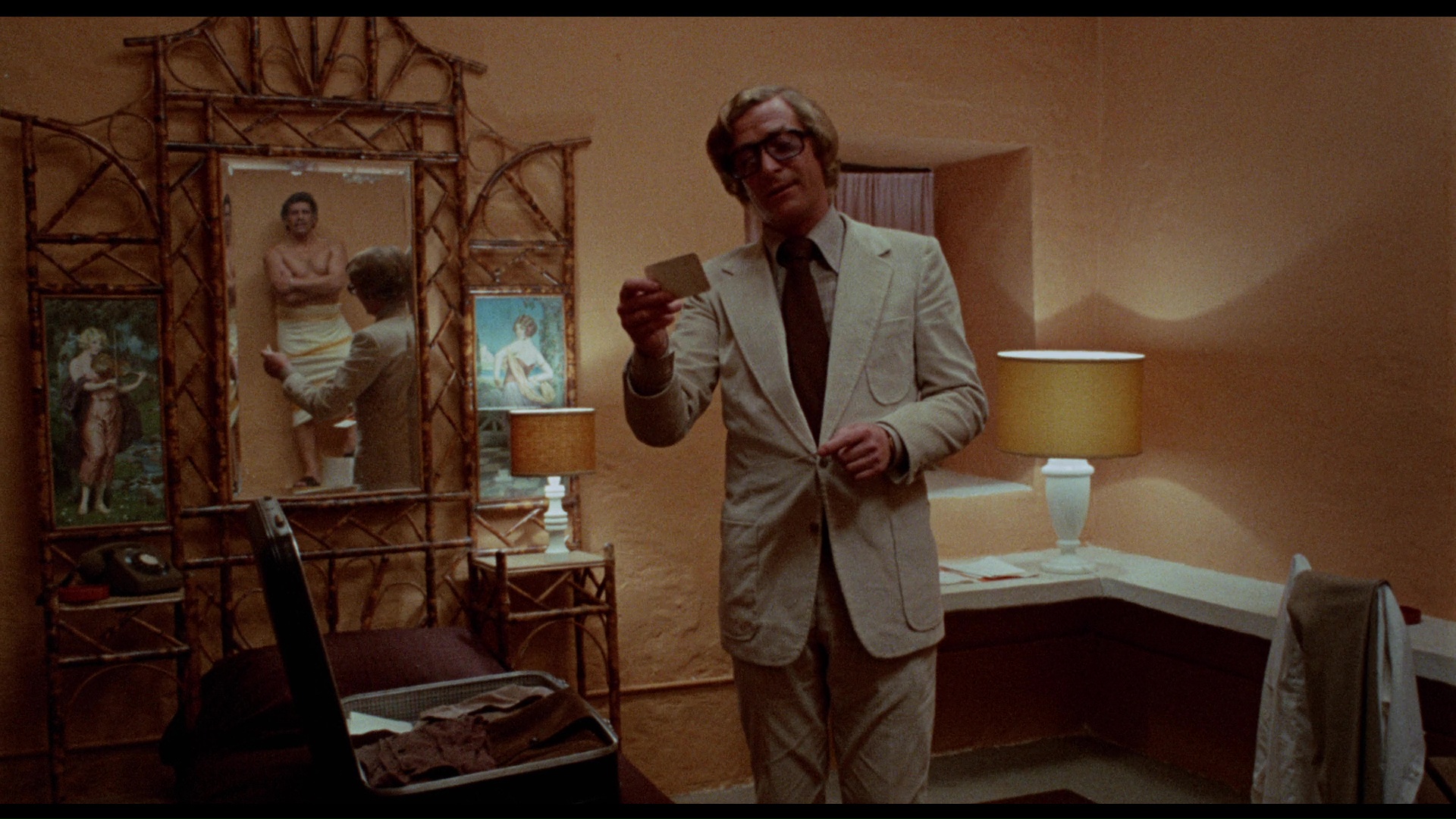 British success of the crime cult favorite Get Carter (which inspired a blaxploitation remake and turned into an American repertory favorite decades later), director Mike Hodges and star Michael Caine decided to join forces again for a much lighter, stranger, sunnier project. Though he'd enjoyed a lengthy TV career, Hodges had only made his big-screen debut with Get Carter and would go on to a very odd string of future projects including serving as ringleader of the 1980 Flash Gordon, getting fired from Damien: Omen II, and making a major comeback with Croupier.
British success of the crime cult favorite Get Carter (which inspired a blaxploitation remake and turned into an American repertory favorite decades later), director Mike Hodges and star Michael Caine decided to join forces again for a much lighter, stranger, sunnier project. Though he'd enjoyed a lengthy TV career, Hodges had only made his big-screen debut with Get Carter and would go on to a very odd string of future projects including serving as ringleader of the 1980 Flash Gordon, getting fired from Damien: Omen II, and making a major comeback with Croupier. 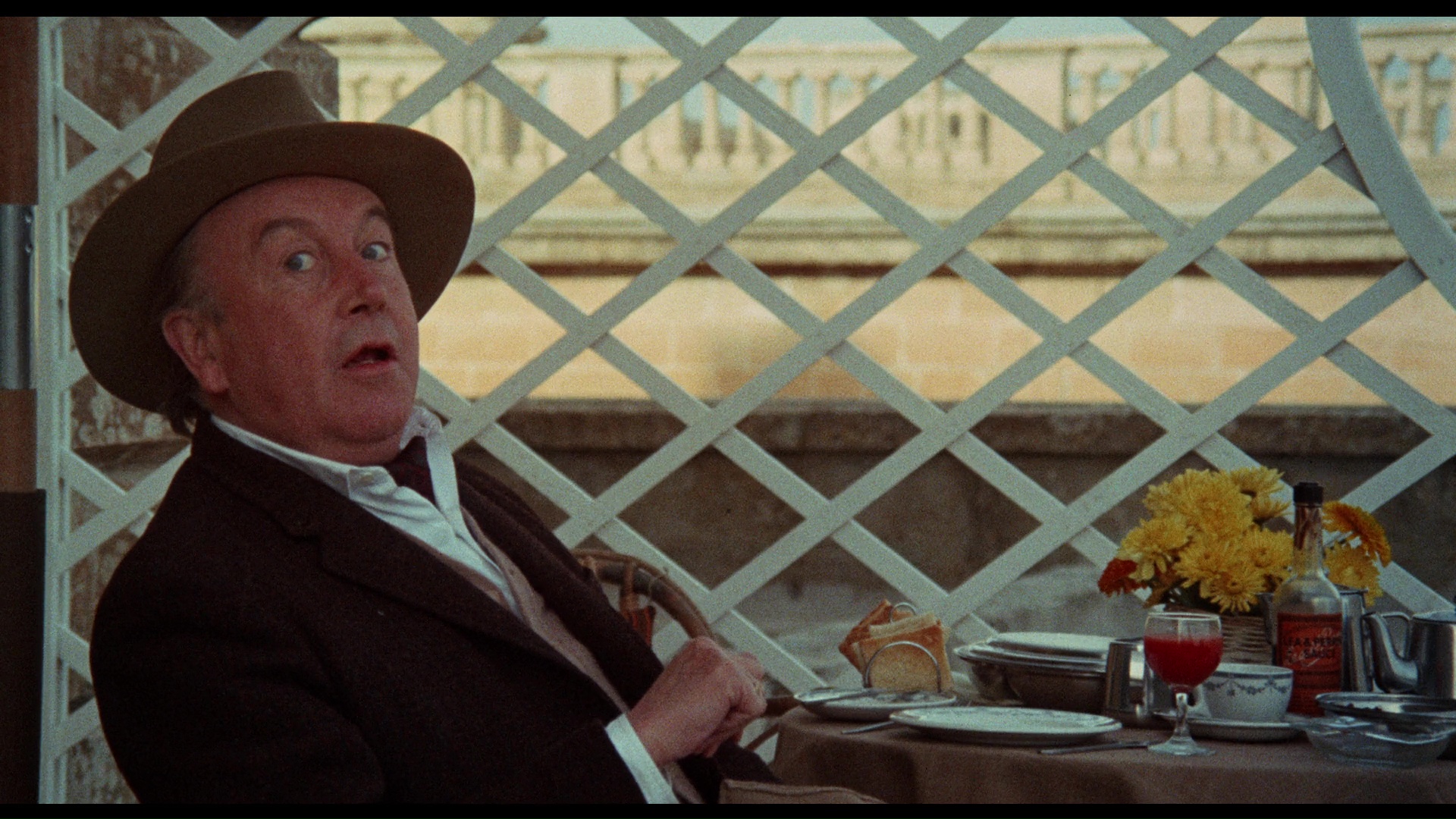 real handful, and it's clear from his cigar-chomping compatriot Ben Dinuccio (Stander) that his ties to crime extend well beyond the silver screen. King agrees to serve as a ghostwriter on Gilbert's autobiography, but when death rears its head, he finds himself caught in a dizzying web of assassins and seductresses.
real handful, and it's clear from his cigar-chomping compatriot Ben Dinuccio (Stander) that his ties to crime extend well beyond the silver screen. King agrees to serve as a ghostwriter on Gilbert's autobiography, but when death rears its head, he finds himself caught in a dizzying web of assassins and seductresses. 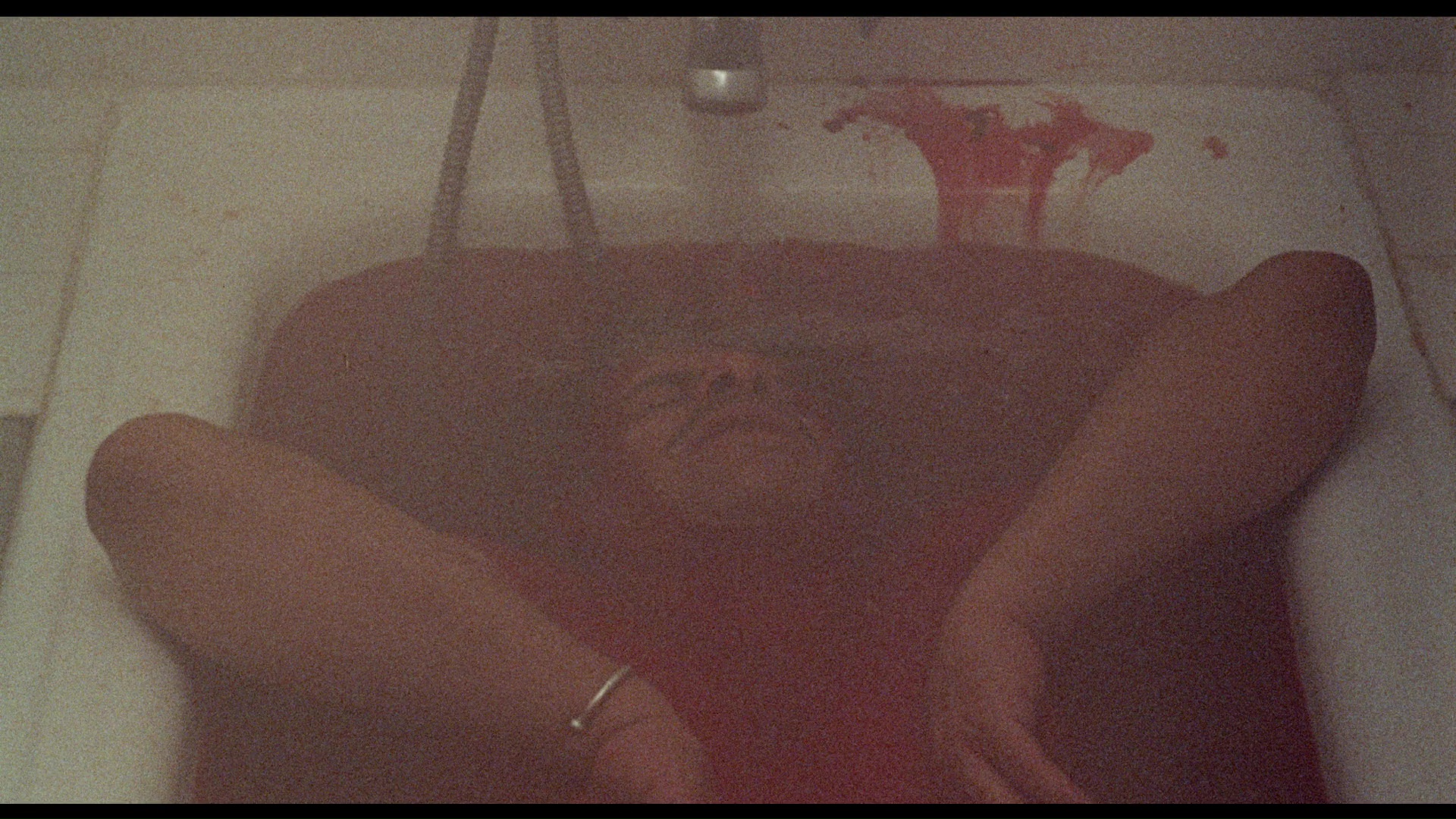
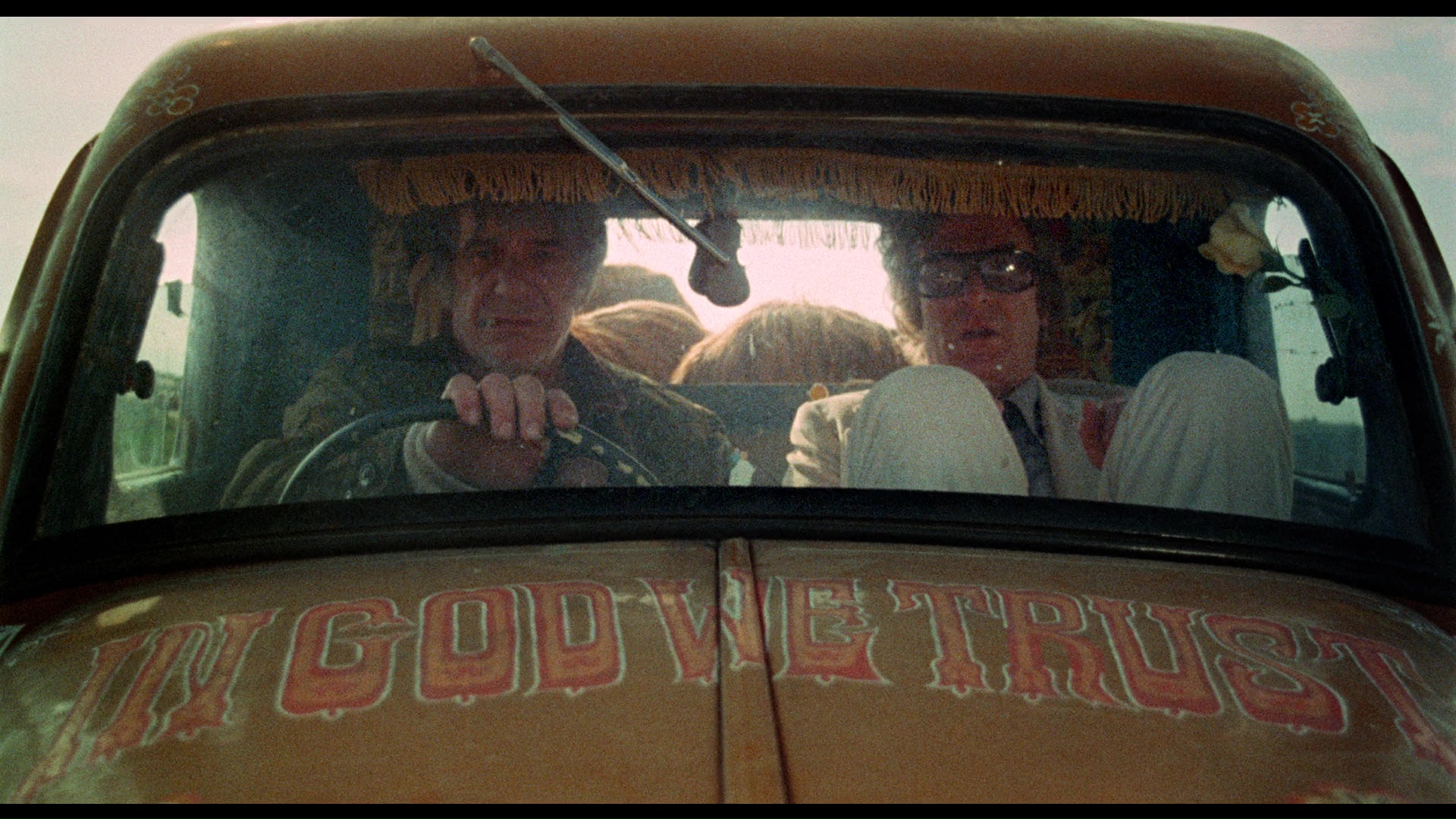 features a new cinematographer-approved transfer that looks darker, richer, golder and
features a new cinematographer-approved transfer that looks darker, richer, golder and 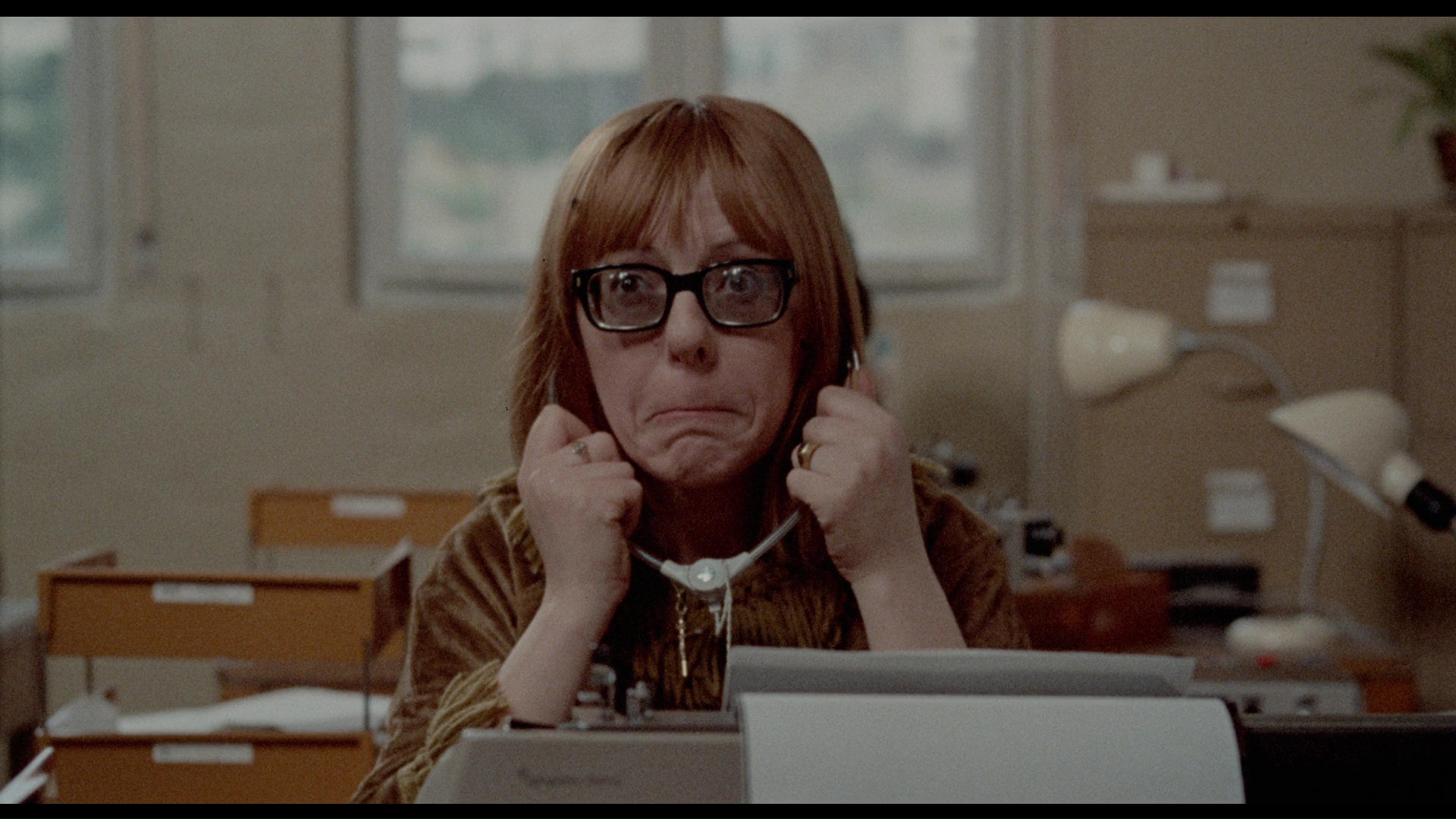 more textured than the DVD, nicely replicating the appearance of an early '70s print. In a nice touch, the original United Artists Transamerica logo has been retained (a very rare beast on home video), along with the BBFC card. The LPCM English mono audio sounds good given the very basic nature of the mix, which features a sparse score by Beatles producer George Martin (who provided a much more dynamic score for Live and Let Die one year later). The release also comes with four new featurettes, the first with Hodges (17m36s) chatting about how the project came about as a sort of covert statement about fascism(!), was always intended to feature Rooney, and had some stylistic ties to one of his earlier TV films, Rumour. Next up, cinematographer Ousama Rawi has a chat (9m15s) about his fondness for this film as his big break (he later shot such films as Zulu Dawn and the underrated The Black Windmill) and an opportunity to explore the visual possibilities of Malta. Later a director of several James Bond Films, editor John Glen has a shorter interview (4m59s) about his longstanding friendship with Caine and the challenge of keeping the film buoyant after a major character death. Finally Tony Klinger, son of producer Michael Klinger, appears for a 6m7s recollection of the difficulty of selling the project in the wake of its more famous predecessor and its unusual look relying heavily on gold and beige. Also included are four separate, rather large image galleries (promotional art and tons of production photos) and a fun theatrical trailer hosted by Stander. The first pressing of the disc (which comes packaged with a new cover design by Nathanael Marsh) also features liner notes booklet essay by Alexandra Heller-Nicholas.
more textured than the DVD, nicely replicating the appearance of an early '70s print. In a nice touch, the original United Artists Transamerica logo has been retained (a very rare beast on home video), along with the BBFC card. The LPCM English mono audio sounds good given the very basic nature of the mix, which features a sparse score by Beatles producer George Martin (who provided a much more dynamic score for Live and Let Die one year later). The release also comes with four new featurettes, the first with Hodges (17m36s) chatting about how the project came about as a sort of covert statement about fascism(!), was always intended to feature Rooney, and had some stylistic ties to one of his earlier TV films, Rumour. Next up, cinematographer Ousama Rawi has a chat (9m15s) about his fondness for this film as his big break (he later shot such films as Zulu Dawn and the underrated The Black Windmill) and an opportunity to explore the visual possibilities of Malta. Later a director of several James Bond Films, editor John Glen has a shorter interview (4m59s) about his longstanding friendship with Caine and the challenge of keeping the film buoyant after a major character death. Finally Tony Klinger, son of producer Michael Klinger, appears for a 6m7s recollection of the difficulty of selling the project in the wake of its more famous predecessor and its unusual look relying heavily on gold and beige. Also included are four separate, rather large image galleries (promotional art and tons of production photos) and a fun theatrical trailer hosted by Stander. The first pressing of the disc (which comes packaged with a new cover design by Nathanael Marsh) also features liner notes booklet essay by Alexandra Heller-Nicholas.![]()